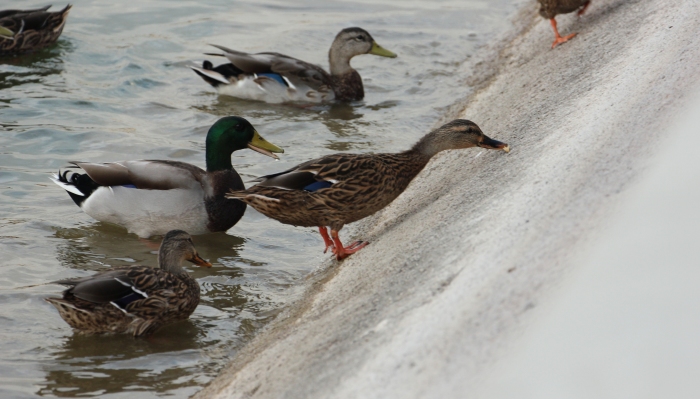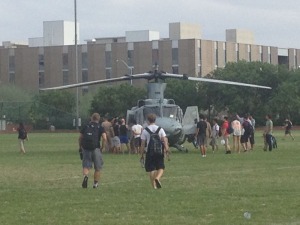I don’t know much about food or cooking, so I am doubtful that I could create anything new or interesting in regards to a food experiment. Instead, I will be documenting my attempt to give up sugar (which I love), in the form of all desserts, sweets, and items containing processed sugar or high fructose corn syrup.
Tuesday 10-13
Doing pretty good, might have over snacked on salty stuff since I can’t have sugar. Went to the convenience store at Memorial Union, very saddened by all the delicious things I couldn’t have (and what a large percentage of the store’s content they made up).
Had a slight stomach ache later in the day.
Wednesday 10-14
In my dream last night I ate some chocolate chip cookies. I felt bad about it when I woke up.
I feel hungrier than normal. Which is weird, since sugar is supposed to make you hungry, right? Slight stomach ache mid-morning, felt sort of like hunger and an overly-full stomach at the same time. Energy level seems about normal, though I feel like I might be a little more on edge than usual.
Facebook says that today is national dessert day. Humpf.
evening: slight stomach ache seems to pop up whenever I eat. I also have a slight headache, though that might be from staring at computer screens all day.
Thursday 10-15
packaged candy in dream last night. Did not eat any.
Woke up in the middle of the night and had trouble getting back to sleep.
Also, it seems like I’m having a minor acne breakout.
headache through morning, slight sore stomach after breakfast. No stomach problems after lunch (I had a banana as part of lunch, and that does have some sugar (I have decided include fruit in my new diet)).
I think I might be getting dehydrated… or sick… I’m having trouble concentrating when I’m staring at my computer screen.
Friday 10-16
I’ve been getting more tired in the evening, so I’ve been going to bed earlier. Also been waking up earlier, so that’s good. No sugary stuff in my dream. Also, it’s worth noting that I’ve been having dreams for the past 3 days, since usually I do not remember my dreams.
I ate some peanut butter spread on sliced banana. Does that count as sugar? I saw peanut butter on a list of low-sugar alternatives, but it still has some sugar in it… hmm…
I was hoping one side effect of this would be some weight loss, but I’m pretty sure my increased fat-intake is going to undo any weight I would have lost.
Went to a birthday party, didn’t eat cake.
Saturday 10-17
Doing well physically, though morale is low. I probably would have started snacking on something if I hadn’t already cleared all the sugary stuff out of my apartment. Not sure if I have a stomach ache or am hungry.
went to the grocery store, stared at sugary baked goods, had a deep sense at both craving and revulsion and disappointment in myself for craving. Halloween = chocolate displays everywhere. Bought some dried apricots and figs (no sugar added).
Sunday 10-18
Feeling better. Overall not hungry and not craving.
Wasn’t too hungry. Ate a few dried apricots. Became more hungry. Ugh.
I think the hardest thing isn’t that I can’t have sweets RIGHT NOW, but that I know for the foreseeable future this is what my life is going to be like, as long as I stick to this diet. I guess it’s easier to just take it a day at a time.
Had my first non-sugar-related craving this evening (for salmon, cream cheese, and avocado sushi rolls). Might get that for lunch tomorrow.
Monday 10-19
Got a little sad this morning thinking about all the delicious sugary stuff I’m not eating. Oh well.
![WP_20150914_18_27_59_Pro[1]](https://diyscience2015.files.wordpress.com/2015/09/wp_20150914_18_27_59_pro1.jpg?w=150&h=84)
![WP_20150908_14_06_06_Pro[1]](https://diyscience2015.files.wordpress.com/2015/09/wp_20150908_14_06_06_pro1.jpg?w=150&h=84)
![WP_20150908_14_06_07_Pro[1]](https://diyscience2015.files.wordpress.com/2015/09/wp_20150908_14_06_07_pro1.jpg?w=150&h=84)
![WP_20150914_18_25_37_Pro[1]](https://diyscience2015.files.wordpress.com/2015/09/wp_20150914_18_25_37_pro1.jpg?w=150&h=84)
![WP_20150914_18_16_15_Pro[1]](https://diyscience2015.files.wordpress.com/2015/09/wp_20150914_18_16_15_pro1.jpg?w=84&h=150)


![WP_20150914_14_38_29_Pro[1]](https://diyscience2015.files.wordpress.com/2015/09/wp_20150914_14_38_29_pro1.jpg?w=150&h=84)
![WP_20150914_18_26_33_Pro[1]](https://diyscience2015.files.wordpress.com/2015/09/wp_20150914_18_26_33_pro1.jpg?w=84&h=150)




















